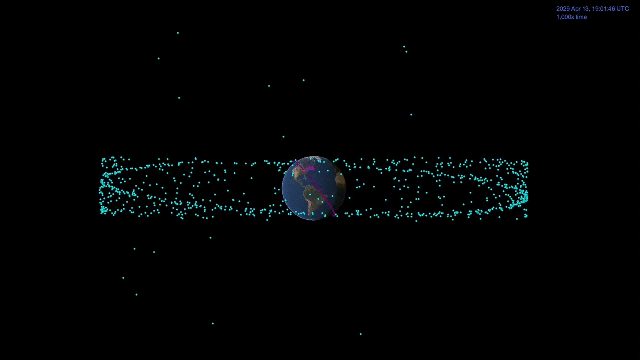While space agencies simulate an asteroid impact this week at the 2019 Planetary Defence Conference, there’s a real asteroid they’re monitoring that will make a close appearance in just 10 years.
99942 Apophis is among the most infamous near-Earth objects. When astronomers at Kitt Peak National Observatory discovered it in 2004, they initially calculated a 2.7 per cent chance that it would hit Earth and assigned it a level 4 on the Torino Scale, the highest assignment for a near-Earth object ever. Though it has since been downgraded and is expected to pose no threat to the planet, it’s a real-life version of the simulated asteroid scenarios that scientists are currently playing out.
“The Apophis close approach in 2029 will be an incredible opportunity for science,” Marina Brozovic, a radar scientist at NASA’s Jet Propulsion Laboratory in Pasadena, California said in a press release.
When Apophis flies by on April 13, 2029, the 335.28m-wide (340-meter) asteroid will come shockingly close, coming within 32,187km of the Earth’s surface. By comparison, the average distance between the Moon and Earth is 384,400 km. This will be a rare opportunity to study an asteroid up close.
You might wonder how scientists go from predicting a 2.7 per cent chance of impact to ruling out danger from such a large asteroid, and whether you should be worried. Single observations and models have error bars, a spread of potential locations the asteroid will pass. You can see how only a few observations of an object that will come within 32,187km of the Earth might suggest a potential strike. But more observations shrink the error bars and the number of potential paths.
By now, researchers have made enough observations of Apophis to rule out a strike in 2029 as well as when it passes the planet again in 2036. The odds are harder to calculate for close approaches further down the line, but for the moment, this particular asteroid is not worth worrying over. Instead, scientists will be discussing what value they can glean from the close approach and whether they should send a mission to study the asteroid.
But asteroid impacts more generally are a real concern. At the Planetary Defence Conference this week, NASA, FEMA, and other agencies are simulating a situation quite similar to the 2004 Apophis discovery. But they’re discussing more than just how best to observe the asteroid—they’re also puzzling over what to do if a real threat to Earth becomes imminent.
Humanity has a long way to go before feeling confident in our ability to handle an impending asteroid strike. As we’ve written, there are a load of asteroids we haven’t discovered, and potential inaccuracies in the data that scientists have already collected. But for now, I guess we should be thankful that scientists are take potential asteroid strikes seriously.
